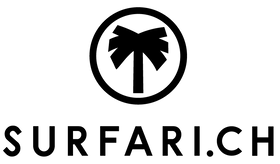surfboards
Choosing the right surfboard is decisive for whether you want or frustrate surfing. How big should the surfboard be? What kind of surfboard do I need? What do the terms like rocker, stringer, etc. mean?
THE FIRST SURFBOARD
In principle, you can learn to ride waves on any surfboard, some are better suited to it, others almost not at all. In order to make progress as quickly as possible, it is essential that you start with the right board.
Your first board should be long, thick and wide so that you have good buoyancy. This makes it easier to paddle and you get more waves. It's also a lot more stable when you stand up. There are "softboards" for beginners, but you'll grow out of them pretty quickly, so buying them isn't necessarily a good idea. Getting such a surfboard in a surf school is ok, because you can give it back after the first week and get a different board next time.
Board size: A beginner board should be around 8 feet. But of course it depends on your size, weight, fitness level, level of motivation and talent. As a rule of thumb, the board should be about as long as you are tall with your arm stretched out.
Board Shape: Ideally, it's a mini Malibu. But it can also be a longboard or a hybrid, as long as the tip of the board is big and round. The reason for this is the extra volume at the tip, which makes it easier for you to catch waves. If you have a pointy nose, you have to paddle the wave at the steepest and thus most critical point in order to catch it.
Construction: soft board, plastic board, fiberglass or epoxy? The construction will be discussed in another chapter. In summary, however, it can be said that everything speaks for an epoxy board. But here are the advantages and disadvantages of the different construction methods in relation to a beginner board:
| construction | Advantages (as a beginner board) | Disadvantages (as a beginner board) |
| soft boards | cheap, lots of volume, almost indestructible, low risk of injury | great weight, maneuverability, quickly at the limit |
| plastic boards | cheap, robust, mass production | limited variety of shapes, there's almost no more |
| polyester boards | Stiffness, variety of shapes | expensive, extremely susceptible to repairs, one-off production |
| epoxy boards | cheap, robust, mass production, rigidity, variety of shapes | Often a bit more expensive than polyester boards |
ANATOMY OF A SURFBOARD
 |
Nose: Term for the tip of the surfboard. Stringer: The stringer is a narrow strip of wood, usually made of balsa. It ensures the rigidity of the board. Rail: The edges of the Sorfboard are called rails. They come in round to sharp designs and are crucial to how the board behaves in the water. Deck: The deck is the top of the surfboard that is waxed. Surfers love it. Bottom: The underside of a surfboard. Usually the underside is not just flat, but has a concave shape. This affects the flow of water under the board and affects how the board rides. Leash plug: Fixed laminated component to which the leash can be attached. Tail: The back of the board. Here, too, a wide variety of designs are common. Straight, Fish, Swallow, Split to name a few. The influence of the tail is considered in a separate chapter. Rocker: Refers to the curvature of the board at the nose and tail. Similar to the flex on a snowboard, the rocker also determines the radius of the curve. In general, shorter boards have a larger rocker. |
SURFBOARD VOLUME
In addition to length, thickness and width, another measure has been established for surfboards. You can find out what the board volume in liters is all about here: SURFBOARD VOLUME CALCULATOR
SURFBOARDS IN THE SHOP - CUSTOM BOARDS FOR SWITZERLAND
When buying your first surfboard, advice is really incredibly important. Nothing is more annoying than struggling with the wrong board for the first few years. Especially at the beginning of the surfing career it's mainly about having as much fun and standing time as possible. Anyone who starts with the wrong board often simply wastes time by the sea. We are therefore specialized in Swiss surfers and their needs. Most of the boards we sell in the surf shop are specially tailored for inland surfers. Of course we also have performance shortboards and step-up boards for the advanced surfers.



